By Brandon Schatz, with edits and contributions by Danica LeBlanc
Today, a lot of the air in comic industry discourse is being gobbled up by an op-ed written by Phil Boyle, the owner of the Coliseum of Comics chain down in Flordia.
In the article, Phil has a few choice words for Marvel and DC, marking the entities as destructive forces to his business. He acts as a spokesperson for retailers as an entity, and isolates a few problems that he sees as points of contention, noting that if either company want to have a market in 2 years, they should heed his words and make a few changes. For the sake of ease, I’m going to quote his solution points directly, with reactions:
1. $3.99 comics. I would say $2.99 but we have increased rents, labor, and insurance costs to cover so $3.99. $4.99 and more is a non-starter with too many fans.
I find this to be an interesting solution, because it identifies the reason books have been creeping up to $4.99 baked right into the crust. He dismisses the $2.99 price point for books because the math doesn’t work out for him, and can’t extend that form of thought to its natural conclusion for a publisher.
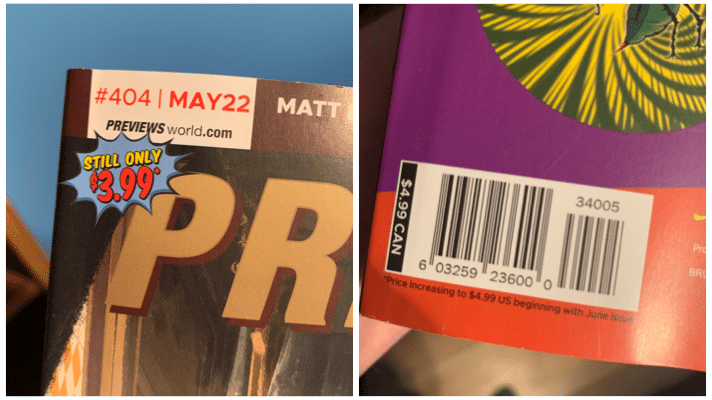
Retailers are taking home the biggest chunk of that price point (usually around 50%) with the rest of the money being shared by the distributor and publisher – and that’s before we all build in our production and processing costs. Are these prices too high? Absolutely – especially when you compare the price of 20 pages of single issue content to what you can nab with a volume of manga. But at the end of the day, the price will always reflect the basic monetary needs of the product and publisher. The moment that becomes untenable, you’re going to see a change in either pricing or format, but until then, it is not realistic to expect comics to remain at $3.99 for long.
2. Fewer covers. I know this will get some pushback from every corner but without a focus, it’s all about the value of the covers and not what’s between them. Max of 2 covers. While you’re at it, give us a hook to sell, not just another convention commission piece with no indication of what’s inside the comic it covers.
This would be a great idea, but like many of his points to come, Phil has misunderstood the “cause” and “effect”. Marvel and DC specifically are small parts of large corporations, and I highly doubt this will change at any point in the near or far future. There is an expected requirement for the line to go up at all costs.
Over the years, both companies (and many others) have determined that having multiple covers makes the line go up – in such a way that it eclipses the costs incurred for the production of those covers. This is because retailers order these covers, and react in a monetarily positive way when incentives are offered.
There’s a principled stance to take here – one that I know very few retailers would even consider: do not order variant covers, even when you have customer requests for them. It is a simple and concise message that would get the point across with enough action. But for the self-same reasons publishers produce multiple covers, a retailer will generally cave and order variants on special request. The option is there because it is desired – or at least desired in such a way that companies see a positive effect when they are part of the line up.
Would I like fewer variants? Absolutely. We are very much a story forward comic shop at Variant Edition, focusing on graphic novels and new comics, with very little back issues to speak of. Do I place the blame on publishers for the volume of variant covers? Absolutely not. You can only ignore the wants of your customers for so long before you cave, and we’ve seen many a publisher cave to the variant edition scourge over the years. Not a one did so to destroy the industry.
3. Editors who are editors. Too many stories are lackluster (sic) and agenda-driven, too many covers are con-sketch drivel with no sales point, and too much interior art is amateurish. It’s clear neither Marvel nor DC has a publishing plan beyond the current reboot.
Here we have the first fetid whiff of personal belief affecting business. I doubt there’s an editor working in comics putting books together with ill intent. If I had to guess at a general “agenda” of an editor, it would be to tell a good story in a way that sells. This is an unknowable alchemy that also shifts and bends because the commodity comes together through the efforts of actual human beings, all with differing needs and wants of their own. It isn’t as simple as “returning to the good old days” and running things that way. Which brings us to…
4. The characters are iconic for a reason. The movies never got traction until they leaned into what made the characters decades-long successes. Change is good for story but inevitably, you need to touch base with what brought them. Gender swaps, sexual orientation changes, and outright changes to who’s in the suit are short-term headline grabbers but without long-term sales with very few exceptions.
First off, I would challenge Phil to point to any iconic character that has been removed from the board that is not still around during this era that he is complaining about. The characters would always leave at a point of stagnation with the intent to return with more buzz. No one was ever pulled away at the height of their popularity, and abandonment was never, and is never in the cards.
To that end, I question the intent of this point. When you’re dealing with characters that have decades behind them, the only way to stay relevant is to refresh and recontextualize. Without that, I’d suggest the industry would be in a much worse place than it is now. Imagine putting out content today that read like it did in the 60s or the 70s or whatever era happens to be more than a decade past. Love him to bits, but take a look at how Bendis sold at his peak, and what he sells now.
The diversification of the line isn’t something being done to ruin or tarnish classic characters. It is something done in the face of a shrinking audience that occurred before these changes were enacted. They were a response, not a cause.
There is nothing to this point with any substance. “Gender swaps, sexual orientation changes, and outright changes to who’s in the suit” is just a high pitched whistle designed for a specific purpose, not designed to be helpful for any rational discourse.
5. Tell stories without proselytizing. I’ve beat this drum for a decade and more but here we are, chasing away a large portion of our customer base with every new tale as they want entertainment, not a serialized sermon.
Right, the grand tradition of the big two never proselytizing. Never has the artform been used to make a statement dating back to Captain America punching Hitler while there were Nazi rallies in the United States or Superman wrecking the hell out of some slumlords. Keep those pesky messages out of art, because we all know that the point of art is to say nothing. Or is the point to say it in such a way that can be dismissed on the way to a good donnybrook?
The best art always has something to say about our world today. If you think this is a modern trend, I have questions about your purported knowledge of this industry’s back catalog and your reading comprehension.
6. Limited new characters. Fresh blood is good, but it’s become obvious that characters aren’t organic to stories, they’re shoehorned in for a bump in sales. Dance with who brung you, as the saying goes.
While this is functioning and carefully phrased as a separate thought, this point functions in the context of previous statements.
A very charitable person would note that Marvel and DC are leaning heavy on introducing new characters because that tends to move the needle in sales. As the machine ramps up, not every creation hits. Again, this is some unknowable alchemy. But the fact remains: a first appearance makes money. So the machine gets the blood it demands, and the demands, as always, come from the retailer.
A less charitable person would look at some of the previous points and see a through line of antagonism towards fresh ideas – especially towards those that functionally evolve or change an idea or product.
The least charitable person might find direct correlation between previous statements, and a want for a past homogeny of product and character, and snowball a theory from there.
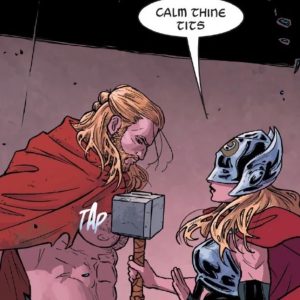
It is important when communicating business frustrations to be fairly deliberate with your words, because you are often representing an idea larger than yourself. In some cases, you’ll equate your experience with others like yourself and speak on their behalf. I know I’ve been guilty of that in the past, and I probably will in the future. The important thing is to make even the slightest attempt at empathy for others when you decide to speak on their behalf, including experiences outside of your own demographic. It is important to present something other than a monolith.
“Limit new characters.” Limit new ideas. But also, don’t attempt to change the ideas that existed before it. Don’t evolve those.
There’s an endgame to that thought process, and I don’t care for it.
7. I’d ask for Minimum Advertised Price but we’re not in that world anymore. You made deals with the devil, which is also on you.
There’s a bit of “inside baseball” language here, so let me explain. When a contract requires a Minimum Advertised Price, or a MAP, it means that no matter what a certain company is selling a product at, they can not actively or publicly advertise a lower price point. This point is clearly targeted at online retailers with deep discounts that retailers like Phil feel are “devaluing the product” – which would cover outfits like Amazon, and Discount Comic Book Service.
When Danica and I started the business, we were paired with a mentor who said “if you find something that works, immediately figure out what to do next – because everyone who can is going to try and do what you did, and some might even be better at it. And when that happens, you better have the next thing in mind.” This might not seem like it has anything to do with this section, but it does.
In a world where comics are gaining in popularity, there will always be someone out there trying to take your lunch. Sometimes that is Amazon, and sometimes that is DCBS. There’s a lot of retailers upset about business that run more successfully than they do. When there is money to be made there is absolutely nothing that can stop this type of thing from happening, outside of a company contracting a MAP. But that’s not going to happen here, because as accepted the medium has become, not a single part of this industry is operating at a level where restrictions are going to help the bottom line of the product in a meaningful way. You’re especially not going to find that behaviour from Marvel or DC when they have the needs of a corporation determining whether or not the current structure continues on a quarterly basis.
This won’t change. We can have a good cry about it and wish things are different, but unless you can bottle those sobs and concoct something helpful, we’re better off focusing on things we can change.
8. Here’s the big one: Discount and shipping. Marvel and DC screwed this market so if you want to continue to have people dumb enough to labor 60 hours a week for poverty wages to sell AND ADVOCATE for your precious IPs, you need to invest in that market. You stripped-mined (that word again, though it applies so precisely) all the cash out of the direct market and retailers are bleeding from the bone. We need your investment, or this market goes away. No, you can’t just sell online as the minimum production costs won’t be met with online only. Investment means putting books on stands at a cost to you, not the people with the highest-per-issue cost.
This one gets me too. “If you want to continue to have people dumb enough to labor 60 hours a week for poverty wages to sell AND ADVOCATE for your precious IPs, you need to invest in the market.”
That’s quite a statement of intent. Within it is an acknowledgement, in some form or another, that this system, this format, requires the over extended, poverty wage labour of a certain portion of the industry. This might be intended as exaggeration, but the intent is clear. There’s a base level expectation of exploitation in this current model – one that I would hope is not present in the structure of Phil’s chain, given his apparent disdain for the idea. I would hope so, given in his op-ed he talk about how: “We, the retailers, cultivated the fanbase the same way the under-appreciated creators created the precious IPs that have made their parent companies obscene amounts of money.”
The implication is, we all deserve more from this, right? There has to be a better way. I sincerely hope that Phil runs that way – that his employees reap the benefits of their efforts and ideas to the fullest extent. That retailers deserve more than working 60 hours a week at poverty wages, instead of it being a feature of this system. That shouldn’t be how this industry, works, right?
At the end of the day, this is a whole lot of nothing. Admittedly, a whole lot of nothing I’ve spent a good chunk of a sick day grousing about.
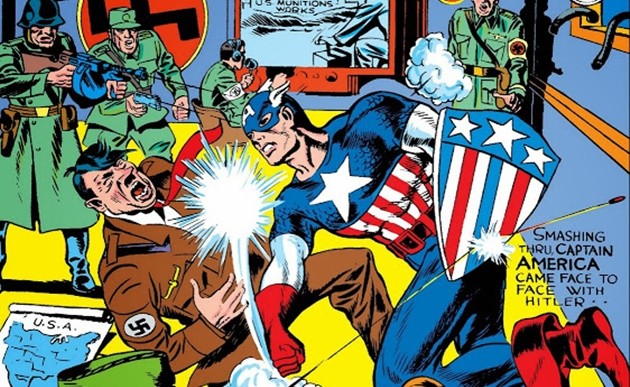
The comic book industry is fine. Or at least, it is healthy, when you look at the larger organism. There are, however, portions of it that are in danger. There’s bits and pieces the refuse to evolve, even as this machine moves at an absolute glacial pace. Are we not supposed to move forward? Are we not supposed to be better? At least better than a system that demands a form of poverty from the most ardent advocates?
Instead of demanding a regression, why don’t we push forward into tomorrow? Why don’t we come up with some solutions, instead of regressing into what was?
I’ve seen it in the eyes of the next generation.
A week ago, we were at a local school running one of our semi-regular graphic novel book fairs. We run them much like a Scholastic book fair, curating a selection of books for different reading and interest levels, and inviting classes to visit over the course of the day.
They are always a great experience, and last week’s was no different.
Near the end of each block, kids sat along the edges of the space provided, already several pages into their new (or old) favourite. We brought along some leftover FCBD and Halloween Comic Fest books for those who might not be able to afford a full book.
Not a single one of them wondered why we had a diverse product base. We have also yet to get a complaint from a parent about the content the kids put in their hands – and the stories happening in juvenile and young adult graphic novels puts mainstream superhero comics to shame when it comes to a diversity of topics and protagonists. You can say that might be location based, but we are neck deep in Alberta, which at this point might as well be Canada’s Florida for its politics and policies.
Each book fair is an exhausting experience, but one that never fails to energize in kind. There’s nothing quite like bearing witness to the power of this medium through the eyes of a new generation. Kids absolutely love these books, and every day, more and more of them are coming into the store with their parents. Very few leave empty handed, and most of them start reading their wares before they even leave the shop.
This might seem anecdotal, but I assure you, it is not. Anyone working within the larger book market will tell you that graphic novels are taking flight, and have been soaring for quite some time now with the juvenile and young adult market providing most of the fuel. The future of this medium is so incredibly bright. The trick, is living to see tomorrow.
There’s such a love and demand for what we do and share. Maybe we look towards that, instead of looking backwards? I truly think forward is a healthier direction. Your milage may vary.
Brandon Schatz and Danica LeBlanc run the national award winning shop Variant Edition in Edmonton, Alberta. Their opinions are their own. For more talk about comics retail, check out Brandon’s Substack – The Indirect Market.


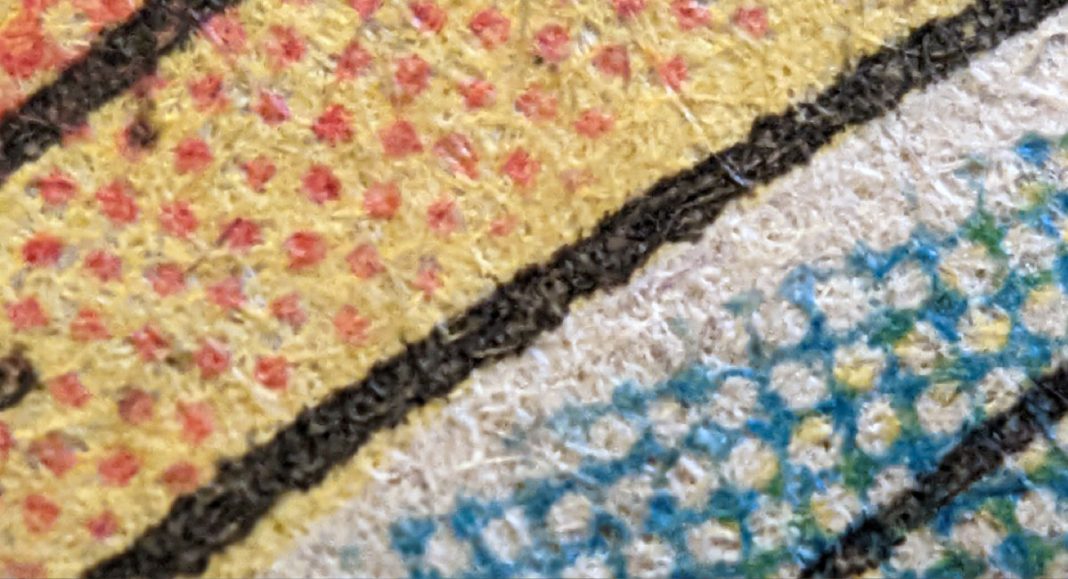
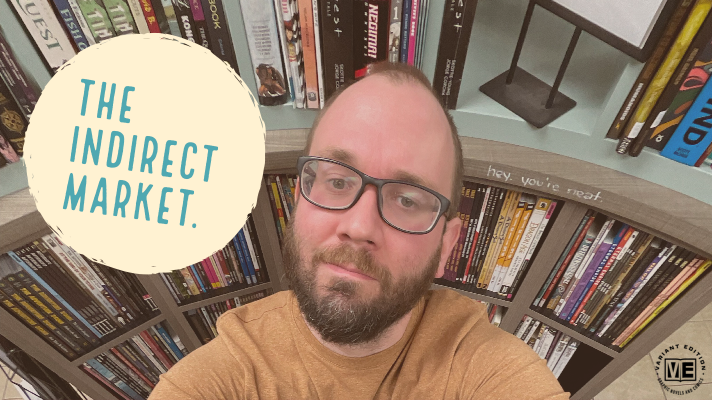

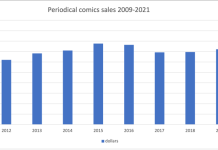



“Would I like fewer variants? Absolutely. We are very much a story forward comic shop at Variant Edition, focusing on graphic novels and new comics”
There is no more irony.
It sounds like Collesieum of Comics would be in a better place if personal bias was removed from a lot of the decision making process. It also seems they’re too reliant on Marvel and DC and that if one of them had a terrible year that their stores will be in deep trouble. A smart retailer would find a way to move customers who were disenfranchised (either it being not their jam or due to personal bias) by Marvel/DC to other books they might enjoy instead of losing them completely.
It is very obvious after reading this Response article that the writer knows very little about how to run a comic shop or what it takes to stay in business.. I have been selling comics for over thirty years and I can tell you what Phil Boyle said it’s so true in regards to the status of most of the comic shops and business that we worked in. Too many stores are closing due to the lack of custoverse willing to purchase what is being published. The prices are too high and too many variant covers. And stories that are not popular. And regardless of how you feel about stories with gender swapping or race swapping It all comes down to what are customers are willing to buy. If they do not want a gay Superman or a gay Green Lantern.
And regardless of how we all feel about it if that story is not going to sell I’m not going to order alot of those books. I will carry whatever my customers want to buy regardless of how I feel about the character. It is a business decision plain and simple.
This post is a spot on response to the doom mongering of the earlier one. Comics are not in any trouble, but a model based on shoddy shops selling a very limited range to a shrinking demographic is rightly dying. Ranting that not enough Marvel and DC superhero issues are selling on a monthly basis is like worrying about the music industry because new Dire Straights CDs aren’t shifting like Brothers in Arms did.
Businesses that act like business and evolve will thrive, those that act like clubhouses will go. And good riddance.
Thanks for highlighting the inherent awfulness of many of Phil’s “arguments”.
By the way, I believe I was given a version of this “manifesto” over 5 years ago, so Phil is consistent when he says he wants nothing to change…
I think both the original article and this response are dancing around the real issue. Western comics are very expensive and largely only available in specialty stores. That created a perfect environment for manga and companies like Scholastic to come in.
The anti-diversity argument is always a bad one because it’s anti-growth. Choosing to serve only one portion of the population will limit the reach and impact of comics.
keep dying.
I truly don’t understand the argument that variant covers or books that appeal to people of different backgrounds are the reason the superhero comics market is struggling. DC and Marvel put out SO MANY BOOKS every month and at $3.99 to 4.99 a pop, your telling me you can’t find $20 worth of books a week that cater to your interests? And who cares about the cover? Just buy the one you like!
As Chris said above, the elephant in the room is, like magazines and newspapers, monthly comic books have become too expensive to produce because people jut aren’t or don’t want to consume this kind of content in that way anymore. Does it suck if you like monthly paper comics? Yes! Does it suck if you are a retailer that has been selling that way for decades? Yes! Does it suck if you are a comic company and that’s how you help pay for collections? Yes!
But being mad doesn’t stop the steamroller from coming. Adapt or die. I’d hate to see comic book stores go the way of so many other retail locations I enjoy (toy stores, record stores, book stores) but being a weekly superhero focused comic store catering to older readers is just not going to last.
Frankly, Marvel and DC (also most indies) don’t do themselves any favors by marketing and creating for essentially only adults. I started reading comics in the 90’s at 10 years old. Considering the graphic violence and language in most comics produced today, I wouldn’t feel comfortable giving 80% of their output to anyone younger than 16. I realize that kids are seeing more violence at a younger age, but I don’t understand why you wouldn’t want to try to make your core superhero books appeal to broader age group while still writing intelligent, moving stories. For example, think about how many adults look at the Bruce Timm DC stuff as gold standard versions of Batman, the Justice League, ect. Would there really not be a market for a JLA book with that tone?
I started collecting comics in 1984.
By the time Spider-Man #1 hit, I had dropped most Marvel titles and had migrated to B&W comics, thanks to a comics shop that offered a diverse range of comic books.
I still bought some superhero titles, and I’ll read a good story even now. But shops need to transition to graphic novels. Long gone are the days when you could subsidize your weekly comics order with the sales from Uncanny X-Men.
Publishers of original comics in the US should study how Egmont transitioned from selling hundreds of Micky Maus comics each week at newsstands to the current fifteen thousands monthly.
Ooopsss. MM is every two weeks, with 50K copies in the German speaking market, but with almost 500K readers, 80% which are boys.
Grrr … “Hundreds of thousands”
Comments are closed.